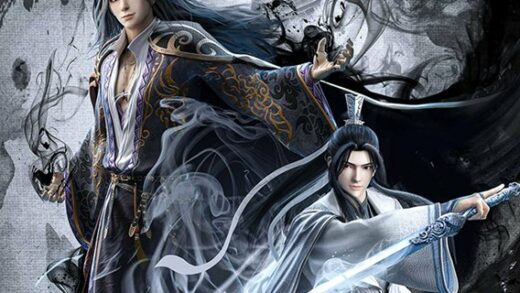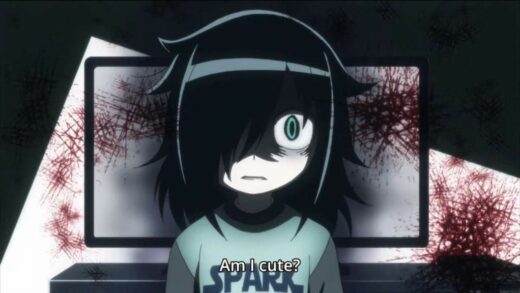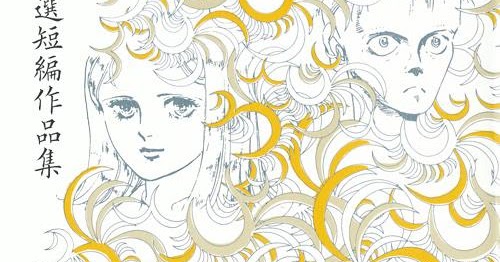- Genre: Shōnen: Comedy, Sci-fi, Gore
- Mangaka: Hayashida (Story), Q (Art)
- Publisher: Gessan
- Published: March 2019—Ongoing
- 6 Volumes
Plot
Dai Dark is a blend of absurd humour, death, immortality, and childhood all covered in gross, grimy, slimy, organic shapes floating through space. That’s a lot, I know.
In this manga by Hayashida and Q, we follow a young teen—Zaha Sanko—who doesn’t really have that many friends but has a strange power. This power is the Shroud of Darkness. Accompanied by his package of darkness (Avakian), he gets into trouble and easily gets out of it. Death, gore, disembodied corpses, and grossly grown body parts all make up the characters and the scenes in this manga. All Zaha knows is that people are after him because they want his Shroud of Darkness—an immense power that could rule the universe.
Along the way, Zaha and Avakian find friends and allies in others who are also being pursued for their powers: Shimada Death and Damemaru Hajime. The four of them will be named the Hateful Four.
This gross found family story is absurd with its physical comedy that only works because of the immortality of some and the mortality of everyone else. The sad moments of wishing to be normal are cut by comedic scenes. This does not stop this capitalist from making a profit.
The story starts off bloody, which isn’t that surprising for a shōnen manga since it played off as gross, and not that super scary. Unless blood scares you, I guess.
Characters
The Bad Guys
Unsurprisingly the lower-level villains read more like Saturday cartoon bad guys. Their big motivation for hunting down Zaha is power or just being the ruler of the universe. But to what end? For the first three-headed villain, that could pass since we were never really meant to delve into him. I just wished the villains were not just villains for power’s sake; a little depth wouldn’t hurt.
Zaha
Zaha being a child protects him from responsibility for 80% of the nonsense that happens in the story. I just feel bad for him. He doesn’t have that many friends, and the ones he does make are also being hunted down for their powers. Zaha lets himself get bullied so he’ll blend in, he dumbs himself down so that teachers won’t ask too many questions. He’s not even capable of being known as himself, using an alias at school. In so many ways he must diminish, shroud, and obfuscate himself just so he can have a semblance of a normal life. I’m just glad he finds friends along the way he can be himself with, otherwise, it would be a villain’s origin story.
Shimada Death
What about Death? Death having 2 forms could have been far more interesting if it were not for Zaha being gross about it—even if he can’t help it that his hormones are running amuck. But back to the dual nature of Death: The cloaked scary crimson masked versus the tall muscular female looking humanoid. The eyes did freak me out, cause they give spider, but not quite since they’re only 6 eyes (thin ice). With their gender not being confirmed, the ogling feels like the way that most cis people see trans and non-binary people—as sexual bodies rather than just people. And of course, knowing Japanese sensibilities, it’s not a surprise this is not really explored, just hinted at and then quickly covered up. One could argue that this need to put a veneer on death helps many deal with it and not contend with all that it entails.
Damemaru
The old man of the group is Damemaru. I don’t know why but he gives me reluctant uncle. He’s older than Zaha; though he says he’s 16, his face gives more “defaulting on his mortgage” than high schooler. That hints to his immortality and the long life he must have lived prior to the story’s beginning. Much like Zaha, he wants to blend in, be forgotten, not mentioned, yet people keep popping up and trying to get his power and package of darkness. Unlike Zaha, he carefully chooses his fights.
Avakian
And last but not least, there’s Avakian, Zaha’s package of darkness. Though he acts more like a very close best friend, confidant, and parental figure at times, he is not a person. He is but a tool for Zaha to use. He’s central to many of the shenanigans the boys get up to. He’s there to save Zaha, execute the plan, and remind him how to stay incognito while at school. Unlike Damemaru’s package of darkness, Nagun, Avakian does Zaha’s bidding out of his own free will.
Art
If there’s one thing that hooked me, it’s the art. The absolute yucky, organic, dirty and messy scenes Q brings to this manga are right up my alley. Already in the first chapter, you get hints of the visuals that may remind you of Dorohedoro. The linework is just as complex and purposeful, filling the page just as darkness fills space. With each page you touch, you can almost feel the grime, use, age and of the spaceships, rooms and every other illustrated place.
Even though the subject matter differs from Dorohedoro, Dai Dark bears the indelible mark of Q’s artistic idiosyncrasies. Namely the highly individualized character designs, the head coverings, the stocky people and the youthful faces contrasting the bulky physiques. Now add a shroud of darkness and an its extremely lived-in space horror set, spacesuits made of meat glass and metal and you’ve got Dai Dark. I love it here.
Final Verdict
If you like the non-linear storytelling of Dorohedoro, along with its art style and the found family trope, you will be pleased with this manga. Be aware of the grossness and grime that comes with the yearning to belong. I would definitely not recommend this manga for readers who do not like gore, because the rest of the manga stays pretty bloody and gross. So, if you’re not into any of this, stay away.



Recent Comments